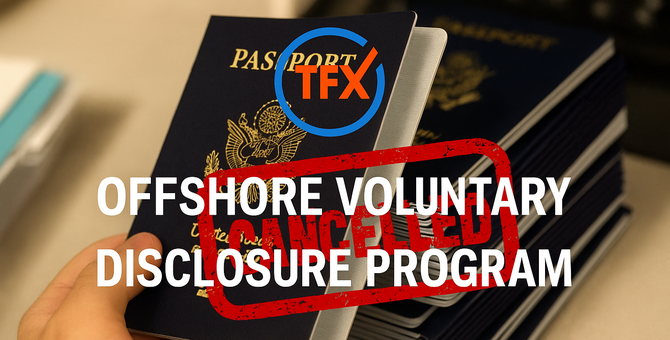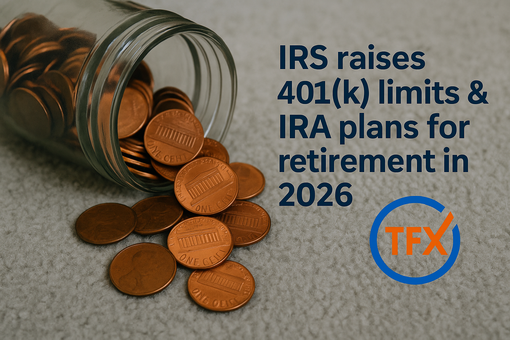Form 720: A Guide to Quarterly Federal Excise Tax Return

Understanding specific tax forms and their purposes is crucial for compliance. One such form that often raises questions is the IRS Form 720.
Designed for the reporting and payment of federal excise taxes, this form plays a pivotal role for many businesses.
In this article, we'll delve deep into the nuances of Form 720, ensuring you have a thorough grasp of its significance.
What is Form 720?
Form 720, known as the Quarterly Federal Excise Tax Return, is a tax form used by businesses and certain taxpayers to report and remit federal excise taxes on specific goods, services, or activities.
"Excise taxes are indirect taxes on the sale or use of specific goods or services. They are often included in the price of products, making them somewhat invisible to the consumer." - Andrew A. (CPA)
These taxes are separate from income taxes and are often levied on items such as gasoline, tobacco products, alcohol, firearms, and certain transportation-related services.
Don’t overpay the IRS! Discover 15+ key tax breaks for US expats

Who needs to file Form 720?
The IRS Form 720 is a specific tax form that requires attention from certain entities. So, who is mandated to file this form, let's explore the details.
Eligibility criteria
1. Businesses
Any entity, whether a sole proprietorship, partnership, corporation, or a limited liability company, dealing in goods or services subject to federal excise taxes must file Form 720.
This includes businesses involved in the sale of luxury goods, certain types of equipment, or specific services. For instance, businesses selling sport fishing or archery equipment are subject to these taxes.
2. Manufacturers and producers
Entities that manufacture or produce goods like alcohol, tobacco, or fuel have a direct obligation.
- For alcohol, this includes breweries, wineries, and distilleries.
- Tobacco producers encompass cigarette and cigar manufacturers, as well as those producing smokeless tobacco products.
- Fuel producers, especially those blending biofuels, also fall under this category.
3. Importers
Those importing goods into the U.S. that are subject to excise taxes have a responsibility not just for the tax but also for understanding the classifications.
For instance, certain types of imported trucks or trailers are subject to these taxes, and the classification can vary based on weight and usage.
4. Retailers and sellers
Entities selling goods or services that attract excise taxes at the retail level have a unique responsibility.
For example, indoor tanning services are subject to a specific excise tax, as are the sales of certain ozone-depleting chemicals.
Retailers selling heavy trucks and trailers, based on their gross weight, also need to be aware of their obligations.
Also read - Non-U.S. Amazon Sellers & U.S. Tax Obligations
Key aspects of Form 720
Purpose of Form 720
The primary aim of Form 720 is not just revenue collection but also regulation.
By imposing taxes on certain goods and services, the government can regulate consumption, especially if these are considered harmful to public health or the environment.
For instance, the excise tax on tobacco aims to reduce its consumption due to its health implications.
Benefits of filing Form 720
1. Compliance
Beyond just fulfilling a legal obligation, timely and accurate filing of Form 720 demonstrates a business's commitment to adhering to federal regulations.
It also provides a clear record of transactions, which can be beneficial for audits or financial reviews.
2. Avoiding penalties
The IRS imposes penalties for late filing or underpayment of excise taxes. By filing on time and ensuring accurate calculations, businesses can avoid these financial setbacks.
Moreover, consistent compliance can also reduce the chances of future audits or scrutiny.
3. Public service contribution
The revenue from excise taxes doesn't just enter the government's coffers. It's often earmarked for specific public services and programs.
For instance, the tax on gasoline contributes to road maintenance and infrastructure projects. By paying these taxes, businesses are directly contributing to public welfare.
4. Tax credits
The government often provides incentives to promote certain activities or industries. For instance, businesses involved in alternative fuels might be eligible for tax credits or deductions.
By being aware of these incentives and claiming them on Form 720, businesses can significantly reduce their tax liability.
NOTE! While Form 720 might seem like just another tax form, its implications are vast. It serves as a tool for regulation, a means of funding public services, and a way for businesses to claim benefits.
Proper understanding and compliance can lead to both financial and operational advantages for businesses.
Penalties for non-compliance
Failing to file Form 720 or underpaying excise taxes can result in IRS penalties and interest charges.
The failure-to-file penalty is typically 5% of the unpaid tax per month, up to 25% of the total tax due. If excise taxes are underpaid, the IRS may impose an underpayment penalty along with interest, which accrues daily until the balance is paid.
Businesses with a tax liability exceeding $2,500 per quarter must make electronic payments – failure to do so can lead to additional fines.
To avoid these penalties, ensure timely and accurate filing, proper tax calculations, and full compliance with IRS requirements.
Form 720 instructions (step by step)
Needing a clear roadmap of filling out Form 720?
Here's a step-by-step mini-guide to help you understand and complete the form accurately:
1. Obtain the Form
- Offline: You can request a physical copy from the IRS or pick one up from a local IRS office.
- Online: Download a digital copy here below - enjoy. )
Form 720 preview
2. Identify the taxable period
Mark the appropriate box for the quarter you're reporting: Q1 (January - March), Q2 (April - June), Q3 (July - September), or Q4 (October - December).
3. Fill in business details
Provide your business name, address, Employer Identification Number (EIN), and other relevant details in the designated sections.
4. Determine your tax liability
Go through each section of the form to identify which excise taxes apply to your business.
Calculate the tax amount for each applicable section. Ensure you're using the correct rates and considering any credits or deductions.
5. Total your tax liability
Sum up the tax amounts from all sections to determine your total excise tax liability for the quarter.
6. Payment details
If you're making a payment with the form, provide details of the payment method. Remember, if your liability exceeds $2,500 for a quarter, electronic payment is generally required.
7. Declaration and signature
Review the form thoroughly to ensure all information is accurate.
Sign and date the form. If you're using a tax preparer, they'll also need to sign.
8. Attach necessary schedules or documents
Some sections might require additional schedules or documentation. Ensure you attach these to the form.
9. Submission
- Offline: Mail the completed form to the IRS address specified in the Form 720 instructions.
- Online/E-filing: Use the IRS e-filing system or tax software to submit the form electronically.
10. Keep a copy
Always retain a copy of the submitted form and any related documents for your records. This is crucial for future reference and potential audits.
By following these instructions meticulously, you can ensure that your Form 720 is accurate, complete, and compliant with IRS regulations. If you're unsure about any aspect, consider consulting a tax professional or CPA.
Never had pro tax help before?
Check out how it works
Filing process and deadlines
Adherence to deadlines is paramount when it comes to tax filings. The IRS is stringent about punctuality, and any delays can result in penalties.
For Form 720, the filing process is structured on a quarterly basis, ensuring that businesses report and remit their excise tax liabilities in a timely fashion.
Quarterly deadlines
- Quarter 1 (January - March): All transactions from the first quarter should be reported by April 30.
- Quarter 2 (April - June): The deadline for the second quarter is July 31.
- Quarter 3 (July - September): Transactions up to September should be filed by October 31.
- Quarter 4 (October - December): The year's final quarter should be reported by January 31 of the subsequent year.
How to file
- Offline: For those who prefer traditional methods, you can obtain a physical copy of Form 720, complete it, and then mail it directly to the IRS. Ensure you keep a copy for your records.
- Online: The IRS provides an e-filing system on its official website, which is a convenient method for many businesses. This system guides you through the process, ensuring all relevant sections are completed.
- E-filing: Modern tax preparation software offers the option to e-file Form 720. Alternatively, hiring a tax professional can simplify the process, ensuring accuracy and compliance.
Special considerations (Pro tips)
When dealing with Form 720, there are certain nuances and considerations to keep in mind to ensure smooth filing and compliance.
1. Electronic filing
The IRS mandates electronic filing for entities with an excise tax liability that exceeds $2,500 for a given quarter. This ensures a faster, more secure, and efficient process, benefiting both the taxpayer and the IRS.
2. Tax payment
Once you've determined your excise tax liability for the quarter, payment can be made using the Electronic Federal Tax Payment System (EFTPS). This system provides a secure and efficient method for tax payments.
Alternatively, payments can also be mailed directly to the IRS, though electronic payments are encouraged for their efficiency and reliability.
3. Recordkeeping
Proper documentation is the backbone of any tax process. It's imperative to maintain detailed and accurate records of all transactions subject to excise taxes.
This not only aids in the preparation of Form 720 but also ensures you're well-prepared in the event of an IRS audit or any discrepancies that may arise.
Drowning in tax details?
Get your free tax consultation
To sum up
Form 720 is more than just a tax form; it's a testament to a business's commitment to fulfilling its tax obligations.
Whether you're a seasoned business owner or just starting, understanding the intricacies of Form 720 can save you from potential pitfalls and ensure you remain in the IRS's good books.
For expatriates and businesses operating internationally, it's even more crucial to be aware of such obligations. If you're seeking more information or need assistance with your tax filings, consult Taxes for Expats for expert guidance.
This guide is for info purposes, not legal advice.
Always consult a tax pro for your specific case.


